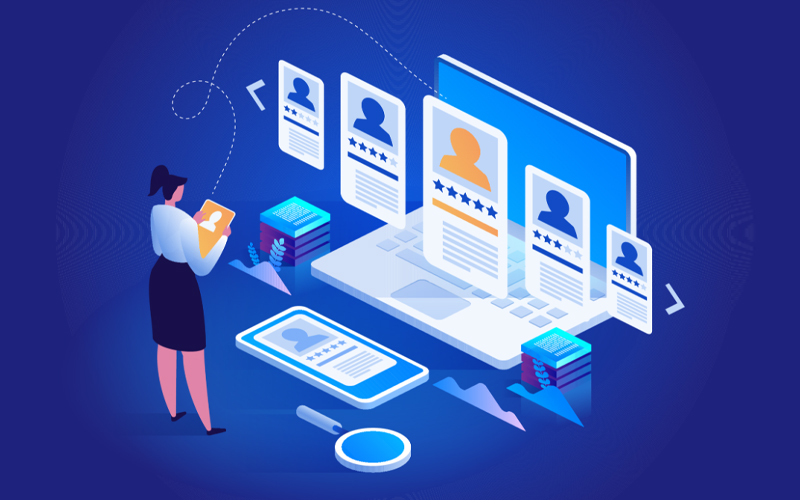Large volumes of data are available to healthcare service providers that enable them to improve the quality of patient care. However, there are certain blind spots present in the available data that negatively impact the healthcare services provided.
Blind spots in data are factors that might not have been accounted for. This might happen if you do not consider the data relevant or it may also happen if you did not know how to use the data. Blind spots are essentially data points that you are not using for analytical purposes. Some common blind spots in healthcare data include societal bias, confirmation bias, etc.
While establishing prototypes based on data, if you miss the blind spots or specific data points, your conclusions are likely to be erroneous. Hence, it is imperative that you reduce blind spots to reach more realistic inferences that account for most instances. However, reducing a blind spot is a much tougher task than meets the eye! Blind spots may not be intentionally ignored but they do go unattended because they are not easily visible.
The most common blind spots in the healthcare domain are:
Implicit bias refers to the blind spot caused when stereotypes about race, gender, etc., impregnate the healthcare data. Confirmation Bias is associated with the human bias of the individual to facts that align with their belief system. Such biases can impact research and analysis of healthcare data, leading to inaccurate closures. The healthcare sector is now using automation technologies such as Robotic Process Automation (RPA), Artificial Intelligence (AI), and Machine Learning (ML) for data management. RPA takes over routine processes and enhances their accuracy. Artificial Intelligence (AI), which has become a vital element in the healthcare ecosystem leverages large data sets to provide valuable insights to healthcare providers. ML algorithms are trained with the help of various data sets. These self-learning algorithms learn from existing datasets and can predict the future based on the available data.
While these technologies can greatly enhance the quality of patient care, they are also vulnerable to errors caused by blind spots. Although technology lacks any bias, it is influenced by human bias. The ML algorithms are trained by humans and are likely to carry the bias of the trainer. Hence, technology tools cannot eliminate blind spots completely.
A classic example of the impact of blind spots is the outcome of a research project carried out in Germany, France, and the USA. The algorithm developed by the researchers was capable of accurate detection of skin cancer. Moreover, the accuracy level of the algorithm was found to be higher than that of dermatologists in the study. However, this research was conducted only for light skin tones. Hence, the algorithm was not trained on the demographically diverse dataset. Therefore, to build effective algorithms, it is imperative that the training data is inclusive and represents all communities it might impact.
Minimal errors in data are imperative for the healthcare sector. This is because the outcomes of medical studies and research impact a wider population. Needless to say, methods that minimize blind spots and thus avoid negative outcomes, need to be developed.
How to reduce blind spots in real-world healthcare data sets?
Data-backed stories
Make sure that any report that is furnished by analysts is evidenced by data. Data-backed information reduces the impact of confirmation bias or implicit bias.
Establish objectives
Whenever any data is being extracted, it is beneficial to establish the purpose behind extracting that data. Clarity of purpose helps gather relevant data for analysis.
Clear communication
Make sure that there is clear communication between the individual who has asked for data and the analyst who is providing data. The individual who has requested the data is in the best place to explain to the analyst the real-world situation they are trying to address with the data they have requested. When the analyst works with this clarity, they are more likely to provide accurate data that is relevant to the purpose.
Maintain governance over data
The healthcare sector is flooded with large volumes of data every day. It is difficult to keep track of all the data. Hence, it is a good practice for data analysts to audit their databases regularly. This helps maintain a clean and relevant database.
Final takeaway
No human is immune to blind spots. A blind spot can occur at any stage in a product pipeline and impact tasks that have human inputs, because of various biases, etc. However, even algorithmic technologies like ML are vulnerable to errors caused by blind spots. Although it is difficult to eliminate blind spots in healthcare data, following strategies like data governance, clear communication and the like can help reduce blind spots significantly.
For organizations on the digital transformation journey, agility is key in responding to a rapidly changing technology and business landscape. Now more than ever, it is crucial to deliver and exceed on organizational expectations with a robust digital mindset backed by innovation. Enabling businesses to sense, learn, respond, and evolve like a living organism, will be imperative for business excellence going forward. A comprehensive, yet modular suite of services is doing exactly that. Equipping organizations with intuitive decision-making automatically at scale, actionable insights based on real-time solutions, anytime/anywhere experience, and in-depth data visibility across functions leading to hyper-productivity, Live Enterprise is building connected organizations that are innovating collaboratively for the future.








